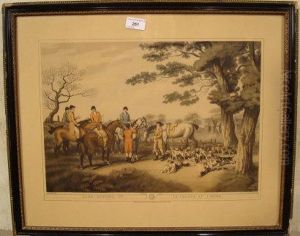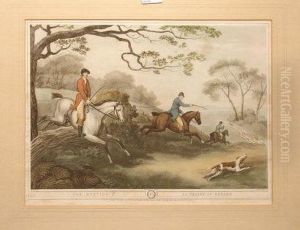William Sam. Howitt Paintings
William Samuel Howitt, born in 1763, was an English author, poet, and artist, renowned for his contributions to early 19th-century literature and art. Coming from a Quaker family, Howitt was deeply influenced by his upbringing, which instilled in him values of simplicity, a love for nature, and a penchant for social justice. These themes prominently feature in both his literary and artistic works, making him a multifaceted figure in the realms of English Romanticism.
Howitt's journey into the arts and letters was marked by a profound connection with the natural world, drawing inspiration from the English countryside. His works often depicted rural life, emphasizing the beauty and tranquility of nature, and reflecting a Romantic sensibility that was becoming increasingly popular during his time. Alongside his wife, Mary Howitt, who was also a notable author and translator, William embarked on numerous literary projects, including poetry, children's literature, and non-fiction works that explored various aspects of natural history and rural life.
Despite his death in 1822, Howitt's legacy endured through his extensive body of work. He was particularly admired for his ability to capture the essence of English rural landscapes and the simple joys of country life in both his written and visual artworks. His contributions to literature and art continued to influence subsequent generations, echoing the Romantic era's fascination with nature, emotion, and the sublime. William Samuel Howitt remains a celebrated figure in the history of English art and literature, remembered for his dedication to portraying the natural world with authenticity and a deep sense of wonder.

